#VirtualProduction
Explore tagged Tumblr posts
Text
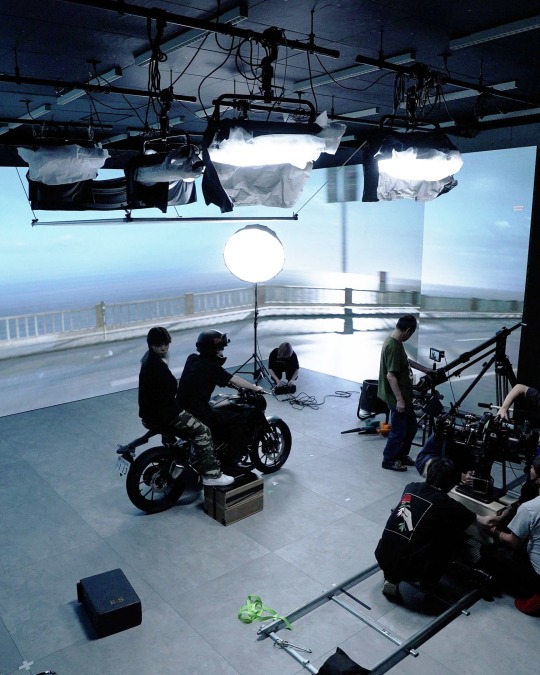


🎯ロケーションハンティング™️
◆千駄ヶ谷 / 渋谷区◆バーチャルプロダクション可能なLEDスタジオ。
【北参道駅1分 / 100㎡ / ¥60,000/h / iD : 24844】 渋谷区は千駄ヶ谷。北参道駅から1分の好立地にある大型LEDスタジオ。
LED大型スタジオとして、撮影機材、配信機材、常駐スタッフ、バーチャルプロダクション機材、全てを揃えたLEDスタジオ。 撮影機材、配信機材、常駐スタッフ、バーチャルプロダクション機材、全てを揃えたこちらのLEDスタジオは写真撮影、動画撮影だけでなく動画配信にもオススメです。
🚩会場ご提案サービス
提案サービスご利用無料。 会場利用費以外にご料金はかかりません。
豊富な知識と経験を持つ担当が ( 展示会 / ポップアップ / イベント / ギャラリー / 撮影 / 動画配信) など、会場のご希望をお伺いし即日提案を行っております。
(用途・エリア・広さ・ご予算・他ご要望 )を記載いただき、 下記お問合せ先で承っております。
🚩掲載会場募集のご案内
上質な会場を取り扱うレンタル予約案内サービスです。 タイプを問わず、質の高い会場を募集しております。
弊社の顧客を御社会場にご案内し、御社の会場運営に貢献できればと考えております。��気軽にお声がけくださいませ。
(会場のウェブサイトまたはお写真、住所)を記載いただき、下記お問合せ先までお声がけくださいませ。
🚩問い合わせ先 📩 [email protected] 📞 03-6809-0952
*公式ウェブサイト 🖥 https://locationhunting.jp
*ロケーションハンティング™️ 製作委員会
#kitasando#sendagaya#photography#ledscreen#virtualproduction#locationhunting#ロケーションハンティング#北参道#撮影スタジオ#バーチャルプロダクション#動画撮影#レンタルスペース#ロケハン#建物探訪#建築探訪#不動産
2 notes
·
View notes
Text
In this episode, Jake Seal talks about the dynamic shift in filmmaking as he compares virtual production to traditional film sets. He shares firsthand insights on how each method impacts storytelling, performance, and production workflow. From LED volumes to practical sets, Jake breaks down the pros, cons, and future of both approaches, giving listeners a behind-the-scenes look at how today's filmmakers are blending technology with cinematic tradition.
#JakeSeal#VirtualProduction#TraditionalFilmSets#FilmmakingTechnology#LEDVolume#FilmSetDesign#ModernFilmmaking
0 notes
Text
5 Tech Innovations Changing the Role of Film Producers
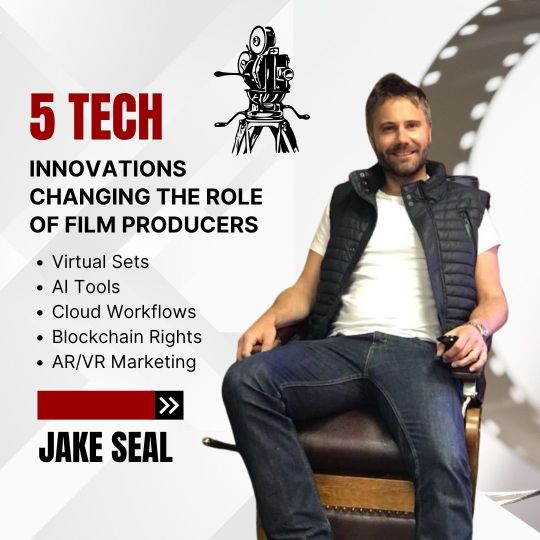
Jake Seal highlights five tech innovations reshaping film producing today. From virtual sets and AI-driven planning to cloud collaboration, blockchain for rights, and immersive AR/VR marketing, these tools help producers save time, cut costs, and reach bigger audiences. Staying ahead with these trends lets film producers like Jake Seal deliver more impactful stories in an ever-evolving digital landscape.
#FilmProducing#JakeSeal#FilmTech#VirtualProduction#AIFilmMaking#BlockchainInFilm#ARVRMarketing#FutureOfFilm#FilmInnovation#DigitalFilmProduction
0 notes
Text
Visual Effects (VFX) Software Market Drivers Include Streaming Growth and Content Demand
As the digital entertainment ecosystem expands, the Visual Effects (VFX) Software Market is experiencing a surge, fueled primarily by the exponential growth of streaming platforms and the skyrocketing demand for original content. Netflix, Amazon Prime Video, Disney+, and others are driving a global race for high-definition, immersive, and frequently VFX-rich productions. This race for differentiation has transformed VFX software from a specialized post-production tool into a cornerstone of visual storytelling across genres and geographies.
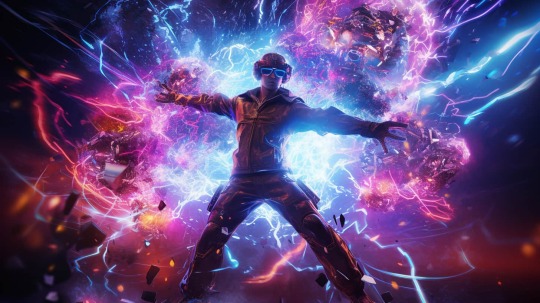
Streaming Platforms as Catalysts for Growth
The VFX software industry owes much of its momentum to the proliferation of over-the-top (OTT) streaming services. With these platforms vying for subscriber attention, there is an increasing push to produce visually compelling narratives that rely heavily on sophisticated VFX. This has created a consistent and growing need for advanced rendering tools, simulation engines, and real-time compositing capabilities, which modern VFX software suites now offer. Even mid-tier streaming services are investing in VFX to keep pace with market leaders.
Furthermore, the competitive content landscape has shifted timelines. Studios now expect quicker turnarounds, which has led to increased demand for automation features within VFX software that can accelerate delivery without compromising quality.
Global Content Demand Reshaping Market Scope
Globalization of entertainment has reshaped content consumption patterns, thereby amplifying demand for multilingual, culturally diverse, and visually stunning productions. VFX software enables creators across the world to build fantastical settings, simulate real-world physics, and enhance narratives regardless of regional production limitations. As a result, VFX software is not just a backend solution but an integral part of pre-visualization and scripting for globally scalable storytelling.
For example, South Korean, Indian, and Scandinavian content has recently gained global viewership. This surge is attributed in part to their high production values, often enhanced through accessible, high-performance VFX software.
Proliferation of Accessible VFX Solutions
With cloud computing and GPU acceleration, VFX software has become more accessible than ever. Small studios and independent creators can now render complex scenes using scalable cloud resources, once only available to big-budget studios. As a result, entry barriers are reducing, democratizing VFX workflows and allowing for a diverse range of content creators to experiment with high-end effects.
Leading software providers are responding to this shift by offering flexible pricing models, including freemium versions, subscriptions, and scalable cloud-rendering services. These models have made it easier for creative teams of all sizes to integrate VFX seamlessly into their production cycles.
The Shift from Feature Films to Episodic Content
Another driver stems from the increasing preference for serialized content over feature-length films. Series-based formats often require extended use of VFX throughout multiple episodes. VFX software now plays a critical role in ensuring visual consistency across entire seasons, not just individual scenes or episodes. This consistent and repeated use increases software license retention and opens the door for modular workflows and collaborative features.
Industry Collaboration and Ecosystem Integration
VFX software vendors are increasingly aligning with hardware manufacturers, cloud providers, and AI developers to offer integrated solutions. This strategic collaboration enhances the capability of VFX tools, allowing for real-time previews, adaptive rendering, and scalable cloud pipelines. These integrations empower artists to reduce iteration time and improve creative output, further driving adoption.
The growing ecosystem includes support for plug-ins, scripting APIs, and integration with 3D modeling or game engines, making modern VFX tools adaptable to different production pipelines—from cinema to AR/VR to live broadcasting.
Evolving User Expectations and Continuous Innovation
End-users are demanding faster rendering times, real-time feedback loops, and intelligent assistance for repetitive tasks. As a result, the VFX software market is seeing rapid innovation cycles focused on UI improvements, machine-learning-assisted effects, and automation of tasks like rotoscoping, motion tracking, and particle simulation.
Vendors are in a constant race to deliver updates that reduce complexity and elevate performance. The innovation is not only making VFX workflows more efficient but also expanding the talent pool by lowering the learning curve.
Regional Market Growth Patterns
The expansion of streaming and content creation has taken hold in emerging markets like Southeast Asia, Latin America, and Africa. With improvements in internet connectivity and smartphone penetration, content producers in these regions are turning to VFX software to compete in global storytelling. In turn, software providers are localizing tools and support systems to cater to these burgeoning user bases.
This growth is also reflected in education and training, as more institutions worldwide begin offering VFX and animation courses that rely on industry-grade software, creating a skilled workforce to meet demand.
Conclusion: Setting the Stage for Real-Time and Virtual Innovation
The surging demand for content and streaming has firmly established VFX software as a pivotal tool in modern media production. From OTT platforms to independent creators, its role is only expanding. As we move forward, the next frontier lies in the convergence of real-time rendering and virtual production—a trend that is poised to redefine the production timeline and creative process. This evolution will be explored in the next article focusing on Visual Effects (VFX) Software Market Trends Reflect Real-Time Rendering and Virtual Production.
#VisualEffectsSoftware#VFXMarket#StreamingContent#DigitalMediaTools#VFXSoftwareTrends#VirtualProduction#RealTimeRendering#CGI#AnimationTools#ContentCreation#MediaInnovation#EntertainmentTech#OTTPlatforms#PostProductionTools
0 notes
Text
Jake Seal Black Hangar Studios: 5 Reasons Virtual Production Is Growing
youtube
Discover the future of filmmaking at Jake Seal Black Hangar Studios as we dive into 5 key reasons why virtual production is taking over the industry. From cost savings to unmatched creative control, virtual production is revolutionizing the way films, TV shows, and commercials are made. At Black Hangar Studios, cutting-edge LED volume stages and real-time rendering technology are helping directors bring their visions to life faster and more efficiently than ever before. Whether you're a filmmaker, producer, or just curious about how Hollywood is evolving, this video breaks down why virtual production is here to stay — and how Jake Seal’s studio is leading the charge.
🎥 Lights, camera, innovation!
#VirtualProduction#BlackHangarStudios#JakeSeal#FilmTech#FilmmakingTips#LEDVolume#UnrealEngine#FutureOfFilm#ProductionDesign#VFX#StudioTour#GreenScreenRevolution#BehindTheScenes#FilmmakingTools#MovieMakingMagic#Youtube
0 notes
Text
From Planning to Action – 7-Day Cinematic Mocap at Apple Arts Studios
At Apple Arts Studios, we just wrapped a landmark 7-day cinematic motion capture shoot—a complete performance capture project that pushed both our creative and technical workflows to peak performance. With meticulous rehearsal planning, smooth execution, and full Unreal Engine previsualization, the project marked our first major shoot since upgrading to the Vicon Vero 2.2 system.
🎬 Rehearsals That Set the Tone




🎥 Action Begins – High-Precision Performance Capture







🧠 Previsualization and Facial Detail Capture




🎉 A Strong Finish – Crew Wrap-Up & Celebration




🌟 What Sets Apple Arts Studios Apart?
● Vicon-powered full performance capture: Body + Facial + Fingers
● Real-time Unreal Engine previsualization of 20+ MetaHuman characters
● No system downtime during 7-day shoot
● Seamless review + approval pipeline for every scene
● 14+ years of post-processing mastery in facial tracking, body retargeting & data cleanup
#motioncapturefacial#motioncapture#facialanimation#animationstudio#virtualproduction#motioncapturestudio#game animation#3d animation#animation#mocap#mocap india
0 notes
Text
Global Virtual Production Market to Soar on Demand for Real-Time Rendering
Virtual production merges physical set design with cutting-edge digital environments to enable real-time visual feedback for filmmaking, broadcast, live events, automotive design, and gaming. By combining LED volumes, motion-capture systems, and extended reality (XR) technology, virtual production solutions streamline workflows and reduce post-production efforts. These systems allow directors and cinematographers to adjust lighting, camera angles, and digital assets on the fly, cutting down on costly reshoots and accelerating time to market. As studios and content creators increasingly prioritize immersive storytelling and interactive experiences, the demand for virtual production platforms, software suites, and hardware components has grown substantially.
Get More Insights on Global Virtual Production Market https://www.patreon.com/posts/global-virtual-129602518

#VirtualProduction#VirtualProductionMarket#VirtualProductionTechnology#AIinVirtualProduction#CoherentMarketInsights
0 notes
Text
10 Powerful VFX Techniques Every Filmmaker Should Master
VFX tricks are revolutionising filmmaking today, enabling artists to create impossible worlds. Whether you're producing a big-budget film or an independent feature, learning essential VFX tricks can make your visual narrative top-notch.
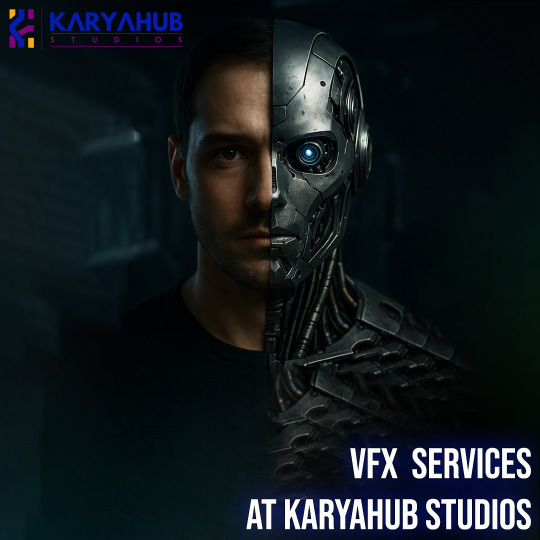
VFX AT KARYHUB STUDIOS
In this guide from KaryaHub Studios, we’ll explore 10 essential VFX techniques that every filmmaker, editor, or digital artist should have in their toolkit. These techniques aren’t just flashy effects – they’re storytelling tools.
1. Green Screen Compositing (Chroma Keying)
Green screen compositing is also one of the most common VFX techniques. It helps you replace backgrounds and place your subjects in any setting – be it a faraway galaxy or a fantastical world.
We employ high-quality illumination and post-production equipment at KaryaHub Studios to get clean keys with no colour spill, thus making scenes appear seamless and polished.
2. Motion Tracking
Motion tracking is a fundamental VFX tool that allows you to insert digital objects into moving footage. It is commonly utilised in action scenes to insert explosions, robots, or signs that track realistically with the camera.
Karya Hub Studios' professional VFX artists ensure precise tracking to make digital objects look really rooted in live-action footage.
3. 3D Modelling and Animation
Brought to life are creatures, buildings, and even environments thanks to 3D modelling. Coupled with animation, it's one of the most engaging VFX techniques applied to films and commercials.
Whether you require a photorealistic creature or a stylised ship, we're experts in custom 3D assets that fit your story vision.
4. Rotoscoping
Rotoscoping is isolating elements within a scene manually. It's necessary for background replacement or layering effects in the back of actors. While it takes time, it's a critical VFX technique for precise work.
Our crew makes sure edges are clean and layer interactions are smooth and realistic.
5. Digital Matte Painting
Need a dramatic skyline or a ruined city without setting up a building set? Digital matte painting is the solution. It is a VFX method involving photography, 3D components, and digital painting to give breathtaking backdrops.
KaryaHub Studios produces thorough matte paintings that blend perfectly with your film's visual tone.
6. Particle Effects
From smoke and fire to dust and rain, particle systems enable VFX artists to model realistic environmental effects. These are often employed in action and sci-fi genres in order to add atmosphere.
We employ sophisticated software such as Houdini to create physically realistic particle simulations that respond to light and movement.
7. Explosion and Destruction Simulations
One of the most exhilarating VFX methods, destruction simulation makes it possible for artists to stage building demolitions, car accidents, and explosions in safety. It includes physics-based calculation for authenticity.
Our VFX team designs cinematic destruction effects that are safe to stage, scalable, and aesthetically pleasing.
8. Lighting and Rendering
Even the greatest 3D model or simulation can appear unreal without sufficient lighting. Lighting is a discreet but potent VFX technique that makes an image look more believable.
We simulate natural light, shadows, and reflections using industry-standard rendering engines to ensure every shot appears photo-real.
9. Camera Projection
This method entails the projection of a 2D image on 3D geometry in order to generate camera motion within a static image. It's an intelligent VFX technique for adding life to static scenes and incorporating parallax depth.
It comes in handy, particularly in budget-friendly productions where complete 3D scenes are impractical.
10. Colour Grading and Visual Style Matching
Though never necessarily a central "effect", colour grading is necessary to bring VFX into the ultimate look of a film. Ensuring tones and textures are matched means that VFX elements will not be visible in an unnatural way.
Professional colour grading from KaryaHub Studios brings the aesthetic of your film together from beginning to end.
Why Use Karya Hub Studios for VFX?
It is our passion for storytelling that inspires every frame we do at KaryaHub Studios. Our talented artists employ the latest tools and VFX methodologies to produce remarkable visuals that engage audiences.
No matter if you are making a music video, advertisement, or feature film, our end-to-end post-production services realise your vision with cinematic impact.
Frequently Asked Questions (FAQ)
Q1: What industries can benefit from Karyahub's VFX services?
We work with industries such as film, television, video games, advertising, VR/AR content, and corporate media—basically any project that aims to convey a story visually.
Q2: How is quality guaranteed?
Karyahub has a rigid quality pipeline with tiered reviews, artist oversight, and constant client feedback to guarantee outcomes align with the creative brief.
Q3: Are large-scale projects possible?
Yes. Karyahub has the capability and technical setup to handle independent and enterprise-grade VFX projects with care and quickness.
Q4: Which tech trends are being embraced?
We embrace tools in AI automation, cloud rendering, motion capture, and real-time visualisation proactively in order to remain competitive and innovative.
Final Thoughts
Mastering these VFX techniques isn’t just about learning software – it’s about understanding how visuals support storytelling. From subtle environmental changes to spectacular explosions, each technique plays a role in immersing viewers.
1 note
·
View note
Text
Jake Seal Reveals How Tech Is Redefining Green Cinema

The film industry is in the middle of a much-needed evolution—one where technological innovation and environmental sustainability are no longer separate paths, but deeply intertwined. As studios and creators around the world face growing pressure to reduce their ecological footprint, a shift toward greener, smarter filmmaking is taking hold.
One industry voice has made it a personal mission to drive this transformation by fusing advanced technology with environmentally conscious practices. The result? A new blueprint for filmmaking—one that’s efficient, forward-thinking, and kinder to the planet.
Virtual Sets, Real Impact
Traditionally, large film productions have required massive physical sets, significant travel, and fleets of diesel generators—each contributing to a sizeable carbon footprint. But with the rise of virtual production technology, those practices are rapidly becoming outdated.
With tools like real-time rendering and immersive LED volume stages, entire worlds can be built digitally—eliminating the need for transporting large crews and equipment across continents. Virtual sets save time, resources, and emissions, all while offering creative flexibility that would have been unimaginable even a decade ago.
This isn’t just about flashy new tech—it’s about rethinking production from the ground up. By cutting down on wasteful logistics, filmmakers can reduce environmental harm without sacrificing visual storytelling.
Clean Energy on Set
One of the most exciting developments in green filmmaking has been the transition from fossil fuels to cleaner energy sources. Some productions have already begun using biodiesel alternatives like repurposed vegetable oil to power equipment and generators. Solar-powered mobile units and battery-powered LED lighting systems are replacing their energy-intensive predecessors.
These changes, while seemingly small on paper, can dramatically reduce carbon emissions during the course of a single shoot. More importantly, they demonstrate that clean energy and professional-grade production are entirely compatible.
The Paperless Office Revolution
Behind the scenes, production offices are also undergoing a green transformation. Scripts, call sheets, and shot lists that once relied on paper are now distributed digitally via cloud platforms and tablets. This not only saves trees but also reduces printing, waste, and unnecessary transport between departments.
It's part of a wider push toward modernizing production workflows through software and smart systems—making every part of the process leaner, faster, and more environmentally responsible.
Educating the Filmmakers of Tomorrow
The push for sustainable film practices is also being woven into education. Through collaborations with film schools and institutions like Canadore College, this vision is being passed on to the next generation of filmmakers. Students are learning how to work with virtual sets, energy-efficient tools, and cloud-based collaboration platforms as part of their standard training.
By exposing young creatives to both modern tech and eco-conscious thinking, the goal is to shape an industry that doesn’t have to choose between innovation and responsibility.
Tech as a Tool for Better Decisions
In this new model, technology isn’t just a replacement for traditional methods—it’s a tool that enables better decisions across the board. AI can optimize production schedules to reduce idle time and power use. Smart location scouting can be done virtually, avoiding unnecessary travel. Even post-production is going green, with remote editing setups replacing energy-hungry studio systems.
Sustainability isn’t just a moral decision—it’s proving to be a smarter, more cost-effective way to make films.
A Vision for the Future
What’s clear is that the future of cinema doesn’t have to be a choice between spectacle and sustainability. The two can go hand-in-hand when the right technologies are embraced with purpose. Cleaner sets, smarter workflows, and environmentally conscious choices can—and should—be the standard moving forward.
As the industry continues to evolve, the goal is simple: to tell powerful stories while protecting the world in which those stories are told. And with the right mix of innovation and responsibility, that future is already in motion.
#GreenFilmmaking#SustainableCinema#FilmTechnology#VirtualProduction#CleanEnergyOnSet#EcoFriendlyFilmmaking#FutureOfFilm
0 notes
Text
Explore the power of seamless live streaming with our broadcast partners! 🚀
At Spring Forest Studio, we're not just a service provider; we're the leaders in virtual production and live streaming! 💻 Our broadcast partners help us deliver end-to-end solutions for every project. From pop-up studios to hybrid events, we ensure each project meets the highest standards! 🎥 Want to elevate your events? Partner with us and experience the future of live streaming! 🚀
1 note
·
View note
Text
Jake Seal Black Hangar on Why ORWO Studios is the Future of Filmmaking
Discover why ORWO Studios is revolutionizing filmmaking with Jake Seal Black Hangar Studios. From cutting-edge virtual production to sustainable, full-service facilities, ORWO is the future of cinema. Join us as we explore how technology, tradition, and innovation are shaping the next era of storytelling.
0 notes
Text
3D Motion Capture System Market Expands as Animation Studios Demand Real-Time Performance Accuracy
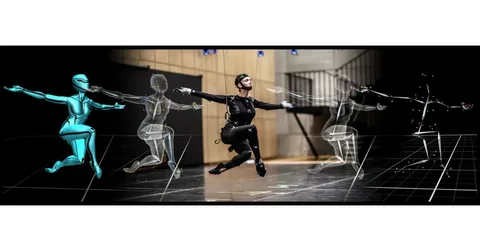
The 3D Motion Capture System Market is witnessing notable expansion, driven by growing demand from animation studios that prioritize real-time performance accuracy. As animated content becomes more complex and consumer expectations rise, studios are embracing motion capture (mocap) systems to achieve high-fidelity movements and lifelike expressions. This technological shift is not only improving efficiency in production but also reshaping creative processes across the animation and entertainment industries.
Real-Time Accuracy: A New Standard in Animation
Animation studios are moving beyond traditional keyframe animation techniques, which are time-consuming and labor-intensive. Instead, they are increasingly adopting 3D motion capture systems to streamline workflows and capture nuanced human motion with high precision.
Key advantages of real-time motion capture include:
Live Feedback and Iteration: Directors and animators can view performances in real-time, allowing them to provide instant feedback to actors and make necessary adjustments on the spot.
Improved Performance Quality: Capturing subtle body movements, facial expressions, and gestures enables animators to create more realistic characters, enhancing emotional depth and viewer engagement.
Reduced Post-Production Time: Real-time mocap minimizes the need for extensive cleanup and manual editing, accelerating production schedules and cutting costs.
Studios working on high-end cinematic productions, television shows, and gaming content are increasingly relying on these systems to deliver performances that are not only authentic but also time-efficient.
The Role of Technology in Enhancing Mocap Capabilities
Advancements in sensor accuracy, software algorithms, and data integration have contributed to the evolution of the 3D Motion Capture System Market. Today's mocap systems offer unmatched precision and compatibility with virtual production pipelines.
The 3D Motion Capture System Market now includes wearable suits, optical systems with multiple camera setups, and markerless solutions that rely on artificial intelligence. These systems provide real-time tracking of multiple performers, even in dynamic environments, making them ideal for both studio and on-location shoots.
Emerging trends include:
AI-enhanced Mocap: Machine learning algorithms are being integrated to predict missing data and enhance accuracy, particularly in markerless systems.
Cloud-Based Workflows: Some studios are adopting cloud-enabled motion capture platforms to enable remote collaboration and faster processing of captured data.
Hybrid Systems: Combining facial, body, and hand tracking into a single system allows for comprehensive motion analysis and seamless integration into 3D environments.
This technological innovation is helping animators achieve lifelike results while also making motion capture more accessible to smaller studios and independent creators.
Applications Beyond Entertainment
While animation remains the largest consumer of motion capture technologies, the 3D Motion Capture System Market is expanding into other sectors, including healthcare, robotics, biomechanics, and virtual reality training.
Use cases include:
Medical Rehabilitation: Motion capture is used to track patient movements for physical therapy and rehabilitation progress.
Sports Science: Athletes use mocap data to analyze movement patterns and improve performance while minimizing injury risk.
Human-Robot Interaction: In robotics, mocap helps train AI systems by feeding human motion data to teach lifelike responses and actions.
These applications broaden the market base and contribute to sustained growth in system sales, software upgrades, and R&D investments.
Market Growth Drivers
Several key factors are contributing to the continued expansion of the 3D Motion Capture System Market:
Increased Content Creation: The rise of streaming platforms and gaming content has created an unprecedented demand for high-quality animated characters and environments.
Demand for Immersive Experiences: Virtual and augmented reality platforms require real-time tracking for an immersive user experience, fueling demand for high-performance mocap systems.
Cost Reduction in Equipment: As technology matures, the cost of mocap hardware has decreased, making it more accessible to mid-sized and small studios.
Additionally, global collaborations and cross-industry partnerships are fostering innovation, allowing new players to enter the market and compete effectively with established leaders.
Challenges and Considerations
Despite its growth, the 3D Motion Capture System Market faces certain challenges, such as:
High Setup Costs: Advanced systems, especially optical mocap setups, still require significant upfront investment.
Data Processing Needs: Real-time motion capture generates large volumes of data that must be processed and integrated quickly, requiring robust computing resources.
Skill Gaps: Proper use of mocap technology requires trained professionals, including motion editors and system operators, which may be a barrier for smaller production teams.
However, continuous improvements in user-friendly interfaces and plug-and-play systems are helping to overcome these barriers.
Conclusion
The 3D Motion Capture System Market is entering a phase of rapid expansion, largely propelled by the animation industry’s demand for real-time, accurate performance capture. With continued technological advancements, decreasing hardware costs, and a growing array of applications, 3D motion capture is poised to remain a cornerstone of digital content creation and innovation.
#3DMotionCaptureSystemMarket#MotionCapture#AnimationTechnology#RealTimeMocap#VirtualProduction#EntertainmentInnovation#CharacterAnimation#MarkerlessMocap#DigitalContentCreation#VirtualRealityCapture
0 notes
Text
The Reader Sources
Warsinsky, S., Schmidt-Kraepelin, M., Rank, S., Thiebes, S., and Sunyaev, A. (2021) 'Conceptual ambiguity surrounding gamification and serious games in health care: literature review and development of game-based intervention reporting guidelines (GAMING)', Journal of Medical Internet Research, 23(9), p. e30390.
This paper focuses on the difference between gamification and serious games in healthcare and the conceptual confusion in the current literature. Thus, the introduction of the set of GAMING guidelines in the framework of the research allows for clarifying the ambiguous notion of game-based interventions. For this reason, it is highly detailed and encyclopedic in its literature review and a valuable source of expert evaluations of different organizations which makes the book the most authoritative guide on the subject of accurate reporting. This study contributes to the current literature as a conceptual work, providing much-needed definition to help scholars in future examination of health-related game interventions as employed in fields like education and virtual areas through serious games and gamification.
Zaky, Y.A.M. and Al Mulhim, E.N. (2024) 'Teacher Education: Design Thinking Approach in Makerspaces to Produce Quality Educational Video Games with a Visual Identity and Improve Design Thinking Skills', Education Sciences, 14(7), p. 718.
This study aims at looking at design thinking as a process in developing video games for learning. This version is retained as it aims to encourage the formation of teamwork and conceptually ORIGINAL group pictures for pre-service teacher education while keeping the above-mentioned guidelines to an ISA graphic design. Its innovative approach is underpinned by the integration of maker spaces and the so-called design thinking elements (such as empathy and ideation). This is an interesting text since it combines art, education, and design thinking with important lessons to be learned about creativity. It also wants to ‘emphasize collaboration’ which directly intersects my goals of exploring game design and animation from an interdisciplinary perspective.
Wu, M., Lee, J.S., and Steinkuehler, C. (2021) 'Understanding tilt in esports: A study on young League of Legends players', in Proceedings of the 2021 CHI Conference on Human Factors in Computing Systems. May, pp. 1-9.
This paper fills this gap by offering an analysis of the causes and effects of the phenomenon of ‘tilt’ in gaming coupled with a look at how it can be affected. The research findings also show that the tilted records originate mostly from teammates while the participants demonstrate predominantly negative self-directed responses. Incredibly, the research shows that those who assume that tilt can be modified have a higher likelihood of applying positive coping that enhances the emotional capital. This is a game psychology and esports sociology research aimed at helping to enhance game experiences and foster healthier gaming cultures. This study is particularly useful as it informs aspects of the competitiveness psychology in the context of gaming which is serially relevant when developing encouraging and friendly gaming communities. That is closely related to my research focus – the relationship between players and designed environments, including games and esports.
Li, Z. (2024) 'Virtuality and Reality: Research on VR Technology Film Production', Journal of Humanities, Arts and Social Science, 8(7).
This paper looks at how the invention of VR has cultured interactivity and some of the aspects of 360-degree cinematography into the conventional filming process.s. It raises how VR disrupts the cinematic conventions focusing on what the viewers see instead of presenting a story that only moves in a certain direction. This paper interlinks components from theatre, amusement parks, and video game design to provide a multi-faceted approach to enriching cinematic VR. The author also underscores specific scenes shot in long takes that even theatre actors can help enhance through improvised theatrical performances and audience interaction. This study offers practical solutions as to how to overcome certain issues like controlling multiple 360-degree cameras and integrating subplots within set designs for VR filmmakers. Its concept of narrative comes close to my desire to combine the uses of technology and the conventional technique of art to bring out the best narrative masterpieces.
Zhou, T., Xu, T., Zhang, D., Jiao, Y., Xu, P., He, Y., Xu, L., and Yu, J. (2024) 'Sophia-in-Audition: Virtual Production with a Robot Performer', in Proceedings of the 32nd ACM International Conference on Multimedia. October, pp. 11184-11193.
This study presents the new approach of Sophia-in-Audition, a virtual production system utilizing humanoid robotic technology in enhanced UltraStage architecture. This setup makes use of a controllable light dome and multi-camera systems for improving performance capture dynamics. These are facial motion transfer and robotic motion replication to overcome problems such as the uncanny valley in virtual acting. The work suggests human-like affective responses as well as her capacity to accurately replicate scenes from famous films and engage with human actors, pointing to the possibility of future assignments of humanoid robots in film. Through combining robotics, dynamic lighting, and multi-camera solutions, this investigation advances the concept of virtual production. Its emphasis on tech and ensemble work resonates well with my topic, which is how new media technologies transform strategies of storytelling and stagings in film.
Jiang, X., Rao, A., Wang, J., Lin, D., and Dai, B. (2024) 'Cinematic Behavior Transfer via NeRF-based Differentiable Filming', in Proceedings of the IEEE/CVF Conference on Computer Vision and Pattern Recognition. pp. 6723-6732.
This research on reverse filming behavior and cinematic shot transfers through 3D engine workflow are presented in this work for the first time. The study refines meta tracks like SLAM and also uses algorithms such as Neural Radiance Fields (NeRF) to control rendering and optimal the camera trajectories. This research enables the connection between the ‘how’ of technical integration and the ‘what’ of artistic implementation, making it easy to transfer shots from a 2D video to a 3D environment. The use of 3D operations shows that technology can enhance narratives, further, original visions can be achieved successfully. Through the elements of rendering and shot composition this study is particularly useful in virtual production. It leads to investigating how innovations in technology can result in the offering of potent tools by directors and owners of motion picture production to come up with engaging stories on screen, and at the same time, enable them to exercise exclusive control.
Bodini, A., Manohar, A., Colecchia, F., Harrison, D. and Garaj, V. (2024) ‘Envisioning the future of virtual production in filmmaking: A remote co-design study’, Multimedia Tools and Applications, 83(7), pp. 19015-19039.
This research is focused on cooperation approaches applied to virtual production aided by immersive perspectives. This way, the study fosters the collectiveness of ideas in practical workshops with audiovisual professionals and develops creative solutions for filmmaking. The level of detail given to the forms and processes of interdisciplinary cooperation makes it a highly useful text for investigating the work of creative and technical positions. It is related to me because it informs me about the successes of combined creativity in the sphere of audiovisual, thanks to which I understand the value of cooperation in implementing large-scale virtual production.
Widjono, R.A. (2020, December) ‘Analysis of user experience in virtual art exhibition during pandemic’, in International Conference of Innovation in Media and Visual Design (IMDES 2020), pp. 93-99. Atlantis Press.
This paper examines virtual galleries as one of the shifted methods of presenting art pieces in the context of COVID-19. This paper discusses artists, exhibitors, and audiences to demonstrate that virtual exhibitions support the art world where physical constraints prevail. It goes into fan and professional reception and how a show can incorporate more mainstream appeal along with satisfying artistic interest. It also proves useful for the overall areas of art, education, and technology since it provides specific ideas about creating digital exhibitions. It aligns with my passion for using technology to enhance both accessibility and innovation in creative industries.
Kavakli, M. and Cremona, C. (2022, March) ‘The virtual production studio concept–an emerging game changer in filmmaking’, in 2022 IEEE Conference on Virtual Reality and 3D User Interfaces (VR), pp. 29-37. IEEE.
This paper aims to analyze the complete changes of Virtual Production Studios (VPS) in the current movie-making techniques. This thesis examines how new display technologies, such as LED walls, virtual reality, and game engines, lead to a qualitative change in production processes. Global perspectives of industrialization, partnerships, and globalization are also discussed in response to the ever-evolving relationship between tech and art. Thus, the paper through the presentation of two examples provides real-life case examples of how the VPS systems are redefining the methodology of shooting, image generation, and post-shooting exercise in the live-action filming industry. This work is invaluable to my interests as it turns light on industry, academic cooperation, and shared resources collaborations. It deepens my appreciation of best practices in Virtual Production Services by shedding light on concrete imaginative and unique/VPS within entertainment industries, which means changing the ways of creating a story and visuals in the future.
Remedios, D.J., Mathew, D., and Schleser, M. (2023) 'A Convergence of Theatre, Cinema, Amusement Park, and Video Game Design to Explore Parallel Interactive Narratives in Cinematic Virtual Reality', Interactive Film & Media Journal, 3(2).
This paper aims to explore the use of various approaches of storytelling from the theatre, cinema, amusement parks, and video games to create two similar but separate narratives within CVR. The authors elaborate on the issues and factors in fashioning such storytelling, noting that there is much more than script development, prequel and sequel design, selecting a cast and crew, sound schemes and design, and interaction with users. This underscores the aspect of directing user attention as a fundamental component of the first-person 360-degree immersion component of the CVR narrative. Based on the synthesis of the respective design branches, the article presents an understanding of the development of interactive media and a foundation for further research on the simultaneous presentation of multiple interactive stories in virtual reality.
0 notes
Text
youtube
Jake Seal Black Hangar: 5 Reasons AI is Changing Filmmaking
AI is revolutionizing the film industry, and Jake Seal Black Hangar Studios is at the forefront of this transformation. From AI-driven scriptwriting to cutting-edge visual effects, here are five ways artificial intelligence changes filmmaking forever.
Key Topics Covered:
AI in scriptwriting and story development
Virtual production and advanced CGI
Automated editing and post-production
AI-driven casting and deepfake technology
Personalized content and AI-generated films
Watch now to explore how AI is shaping the future of cinema.
Subscribe for more insights on film production and technology.
#JakeSealBlackHangar#AIinFilmmaking#MovieTech#FilmProduction#ArtificialIntelligence#HollywoodTech#Deepfake#VirtualProduction#FutureOfCinema#Youtube
0 notes
Text
Creepy Monsters
This pack of nightmare creepy monsters won't let you sleep anymore...
#fab#unrealengine5#ue54#3dvirtualand#terror#horror#halloween#creepy#zombie#Fairfun#filmopen#virtualproduction#Monsters
0 notes
Text
A Guide to Photographic Lenses: From the Widest to the Most Telescopic
#photography#Synthography#CGI#indiedevs#cinematography#VirtualProduction#Technology#AI#Artificial Intelligence#Generative AI#Omniverse#NVIDIA#VR#AR#Programing#Python#HTML#JavaScript#Full Stat Developers#programmers#Artist#Developers#Graphic Designers#IndieGames#Indie Games#Hard Surface Developer#Art#AiArtist#Illustrator#Animator
1 note
·
View note